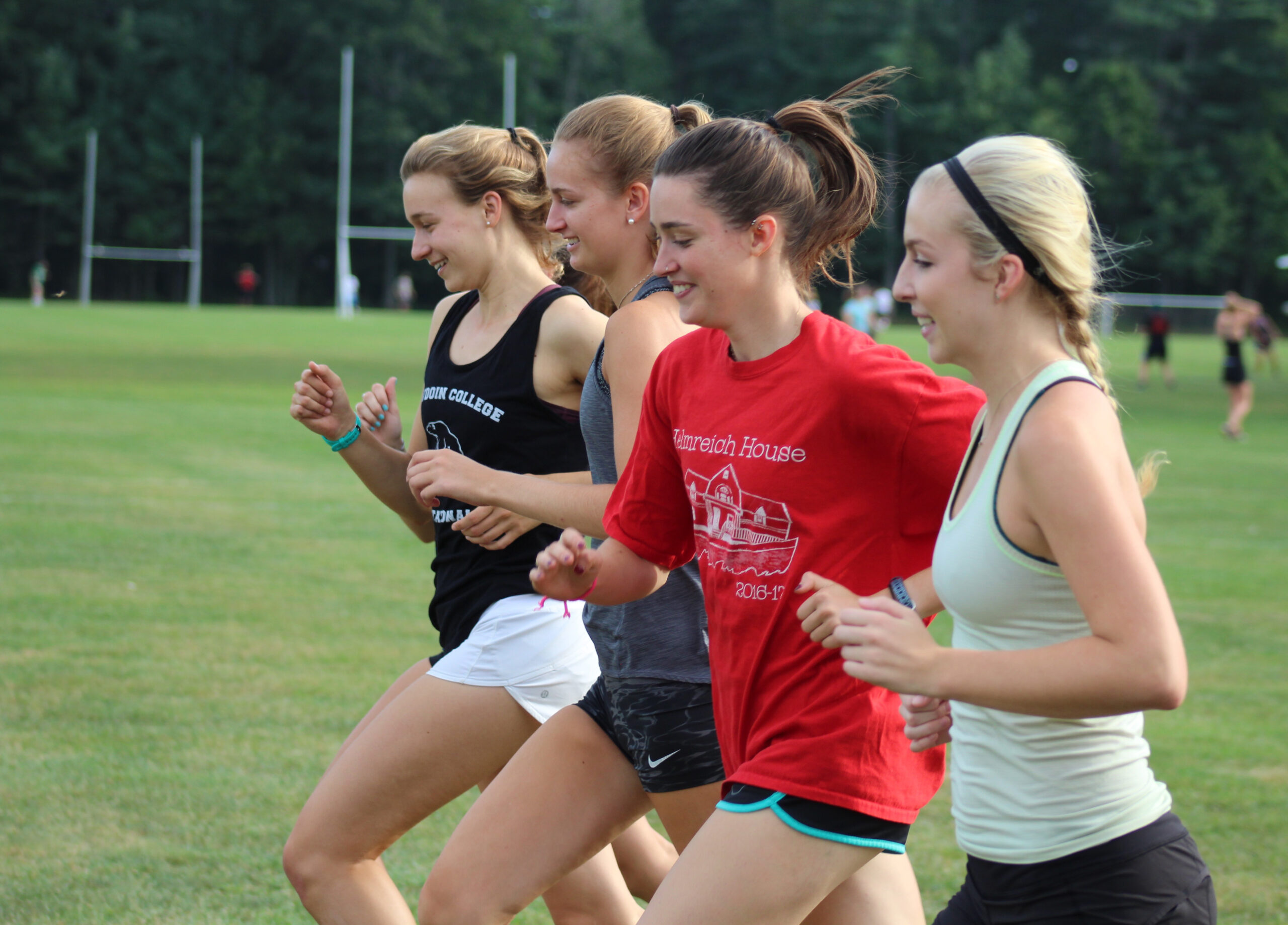Women’s cross country strives to build off track’s success
September 7, 2018
 Gwen Davidson
Gwen DavidsonNearly six months ago, four Bowdoin women stood on the national championship podium after winning the indoor track distance medley relay, capping off an exceptional season for the Polar Bears. Many of the runners on the women’s indoor track and field team will also run cross country this fall, carrying last spring’s momentum onto the courses later this month.
But as similar as they may seem, track and cross country differ in a few key ways, and last year’s strong performance does not guarantee success this fall.
For one, rather than running on a relatively flat track, meets are held in heavily wooded and hilly areas. It is not unusual for spectators to lose sight of the racers as they weave between trees on narrow paths. Another difference lies in the style of running. Cross country runners are encouraged to run in groups of three.
Julia O’Rourke ’19, captain of the women’s cross country team, remarked that running alongside her teammates, also known as “pack running,” is an advantage.
“In races we always try to use each other to lead different miles, to always be that pinpoint ahead of you. It’s so much easier to stay with a wave of people,” said O’Rourke. “[Pack running] makes me feel a lot more powerful when I run, and it’s a lot less work. It’s easier to move through a race with teammates. Both because it’s encouraging, but also [because] it’s helpful in mile splits and pacing.”
Pacing is integral to the success of a cross country runner. Women race six kilometers, over three and a half miles, each meet—much longer than the 400 meters, 800 meters, 1200 meters and one-mile components that make up the track medley relay race.
Because of these differences, Peter Slovenski, head coach of both the women’s and men’s cross country teams and track and field teams, is hesitant to say that last year’s indoor track achievements will predict this year’s cross country season.
“Different runners will shine and excel at different race distances. Six thousand meters [is] a long race [with] a lot of hills,” said Slovenski. “Somebody’s talent might be best at 800 meters, 1,000 meters, 1,200 meters or a mile, and by the time you get to 6,000 meters, that can start to be a race distance that isn’t quite the best for some of the runners that excelled at the distance medley relay. [Some are] really fast at both distances. Those are rare runners [but] we have some of those.”
The first cross country meet is not until September 29, giving the women’s team an extra few weeks to ease the transition between summer workouts and in-season training.
“Typically in the summer we have a goal of weekly mileage,” said O’Rourke. “We’ll increase our mileage about two miles a week; that’s the safest way to do it. It’s supposed to get a lot of distance under your belt so you feel prepared to do more distance, base endurance workouts and eventually speed workouts.”
Cross country teams rely on depth, a measure of how close the top runners are to each other’s scoring position. It is imperative that each runner can remain healthy during workout variations and throughout the race season. Two strong runners are abroad, including Caroline Shipley ’20, a lead scorer last year. The team’s current depth won’t be clear until the first meet.
“It’s kind of exciting and fun when you get a lineup that’s a little more unknown,” said Slovenski. “We have 35 women on the team, so we have lot of depth and a lot of candidates to fill the scoring positions. The strength in our team will be from the number three, five, six, seven or eight positions. We have eight or 10 really good candidates for those five positions.”
The first meet for men and women will be held on Bowdoin’s home course. A flat and wide trail, the course will also host regionals on November 10. The Polar Bears’ home course experience is sure to be useful as the women battle for a place in the top ten in the nearly 60-team region. This season, they hope their talent will shine through once again and lead to a cross country championship.

Comments
Before submitting a comment, please review our comment policy. Some key points from the policy: